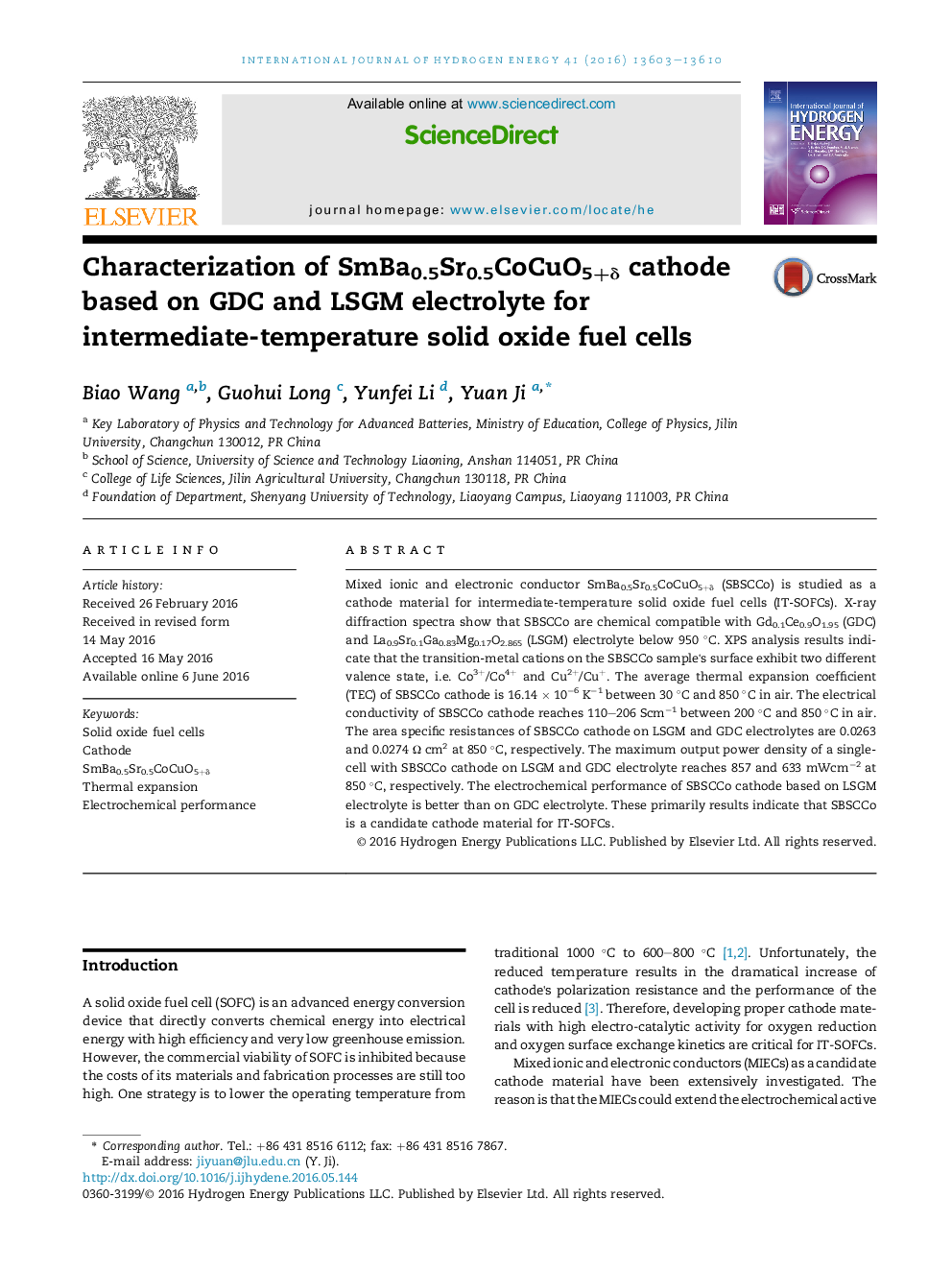| Article ID | Journal | Published Year | Pages | File Type |
|---|---|---|---|---|
| 1276474 | International Journal of Hydrogen Energy | 2016 | 8 Pages |
•XPS shows valence state of Co3+/Co4+ and Cu2+/Cu+ in SBSCCo.•SBSCCo are chemical compatible with GDC and LSGM below 950 °C.•Cu partially substitute Co sites can effectively lower the TEC SBSCCo.•Lower polarization resistance of 0.0263 Ω cm2 is obtained on LSGM at 850 °C.•Higher output power density of 857 mW cm−2 is obtained on LSGM at 850 °C.
Mixed ionic and electronic conductor SmBa0.5Sr0.5CoCuO5+δ (SBSCCo) is studied as a cathode material for intermediate-temperature solid oxide fuel cells (IT-SOFCs). X-ray diffraction spectra show that SBSCCo are chemical compatible with Gd0.1Ce0.9O1.95 (GDC) and La0.9Sr0.1Ga0.83Mg0.17O2.865 (LSGM) electrolyte below 950 °C. XPS analysis results indicate that the transition-metal cations on the SBSCCo sample's surface exhibit two different valence state, i.e. Co3+/Co4+ and Cu2+/Cu+. The average thermal expansion coefficient (TEC) of SBSCCo cathode is 16.14 × 10−6 K−1 between 30 °C and 850 °C in air. The electrical conductivity of SBSCCo cathode reaches 110–206 Scm−1 between 200 °C and 850 °C in air. The area specific resistances of SBSCCo cathode on LSGM and GDC electrolytes are 0.0263 and 0.0274 Ω cm2 at 850 °C, respectively. The maximum output power density of a single-cell with SBSCCo cathode on LSGM and GDC electrolyte reaches 857 and 633 mWcm−2 at 850 °C, respectively. The electrochemical performance of SBSCCo cathode based on LSGM electrolyte is better than on GDC electrolyte. These primarily results indicate that SBSCCo is a candidate cathode material for IT-SOFCs.
